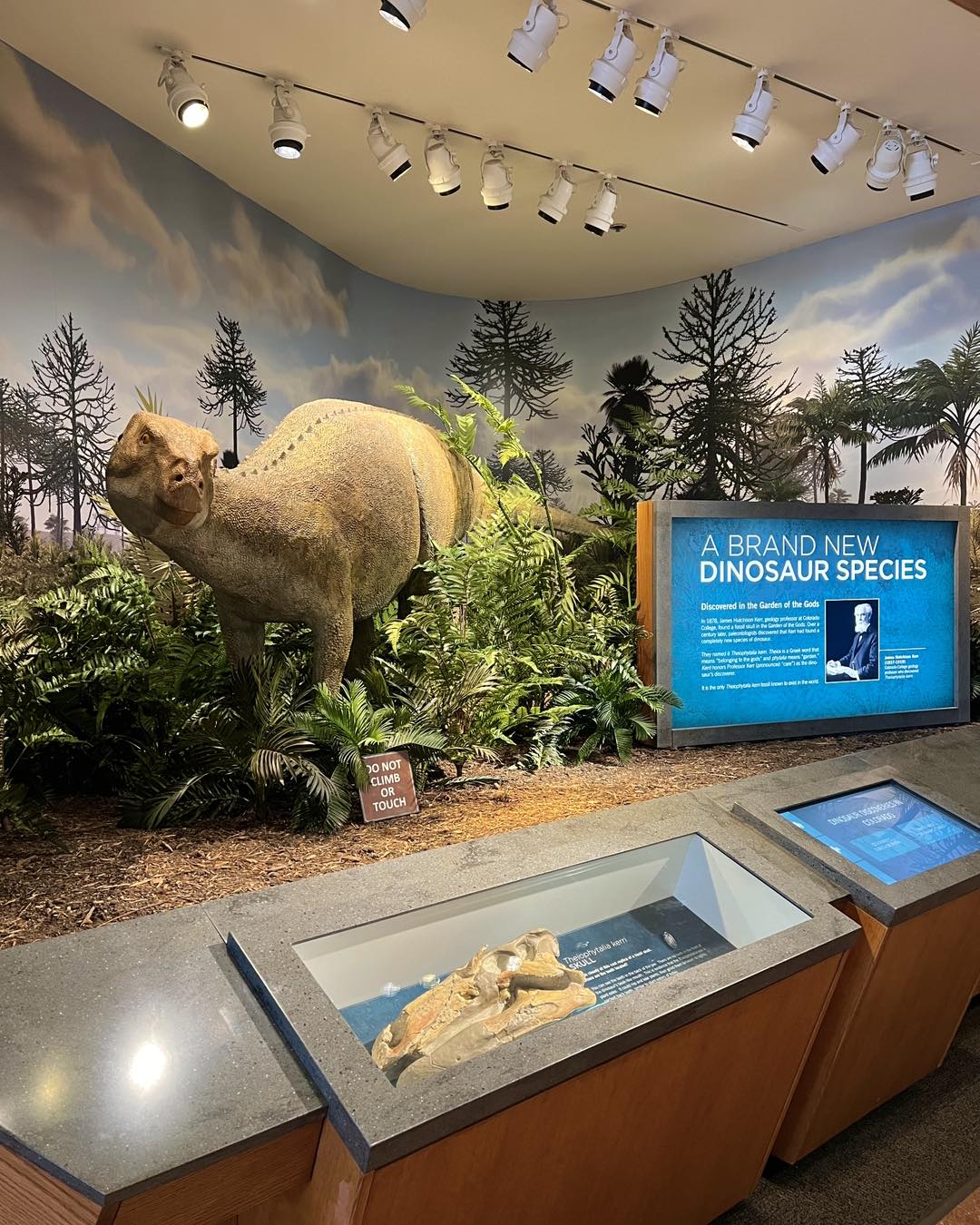A Case of Mistaken Identity
In 1878, Professor James H. Kerr of Colorado College discovered what he believed to be “portions of 21 different sea monsters” in the Garden of the Gods Park. Kerr wrote of his discovery to associates back east, and caught the attention of O.C. Marsh, a famous dinosaur paleontologist from Yale University.
In 1886, Marsh came to Colorado Springs and obtained the fossil skull, identified it as a Camptosaurus dinosaur, and shipped it to the Peabody Museum in New Haven, Connecticut. It was there Dr. Kerr’s dinosaur fossil was forgotten about for one hundred and seventeen years.
In 1994, while the new Garden of the Gods Visitor Center was under construction, The Denver Museum of Nature & Science was consulted about a new dinosaur exhibit at the Visitor Center. It was then that the museum’s team members, Dr. Kirk Johnson and Dr. Ken Carpenter, surprised the city park staff with information about the Camptosaurus skull found in the Park.
The path to true discovery
Kirk Johnson hand-carried the dinosaur fossil from Yale to Denver; so that Ken Carpenter could study the ancient dinosaur skull and make a precise replica (cast) of it. In 1997, The Denver Museum of Nature & Science gave the cast of the Camptosaurus skull to the City of Colorado Springs, to be exhibited in the Garden of Gods Visitor & Nature Center. It was a rare gift, with an ancient and modern story, but the surprise ending was yet to come.
For more than ten years, the dinosaur, known as “Campi”, had been part of the Jurassic exhibit but, from the time he made the replica, Dr. Carpenter had his doubts about this dinosaur’s true identity.
Theio’s true identity is revealed
In 2006, Dr. Carpenter along with his associate, Kathleen Brill, published a paper that resolved irregularities in the attributes of that skull and its Camptosaur heritage – the shape and length of the skull and snout, and the position and shape of nasal and eye-socket openings. Those variations, plus issues with the soils originally embedded around the fossil, have resulted in the designation of the first and only Theiophytalia kerri.
Then, on May 24, 2008, Garden of the Gods Visitor & Nature Center announced the world’s only known fossil of an entirely new dinosaur species, Theiophytalia kerri. Theios is of Greek origin, meaning “belonging to the gods” and phytalia means “garden” and kerri honors the name of the scientist who first discovered this 125 million-year-old skull in Garden of the Gods Park.
Theiophytalia kerri is thus determined to be a new species of dinosaur, the only one known in the world and “belonging to Garden of the Gods.”
Come see “Theio” in person at The Garden of the Gods Visitor & Nature Center!

